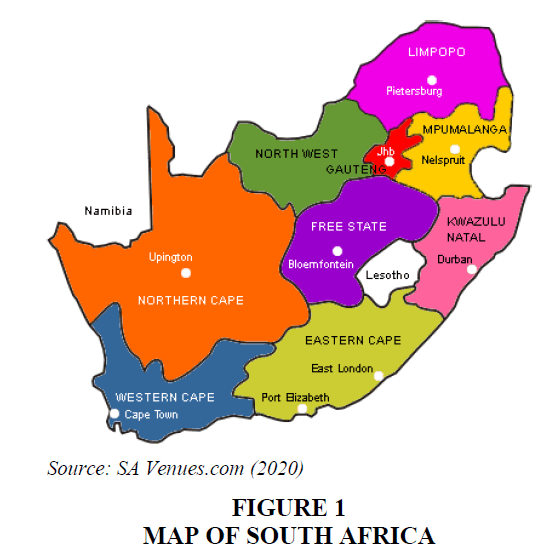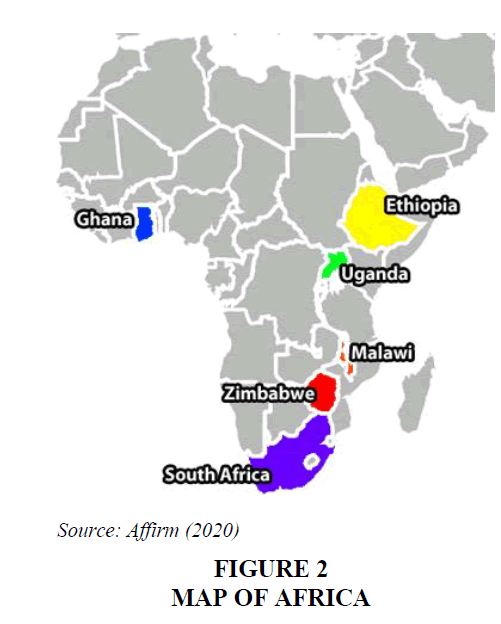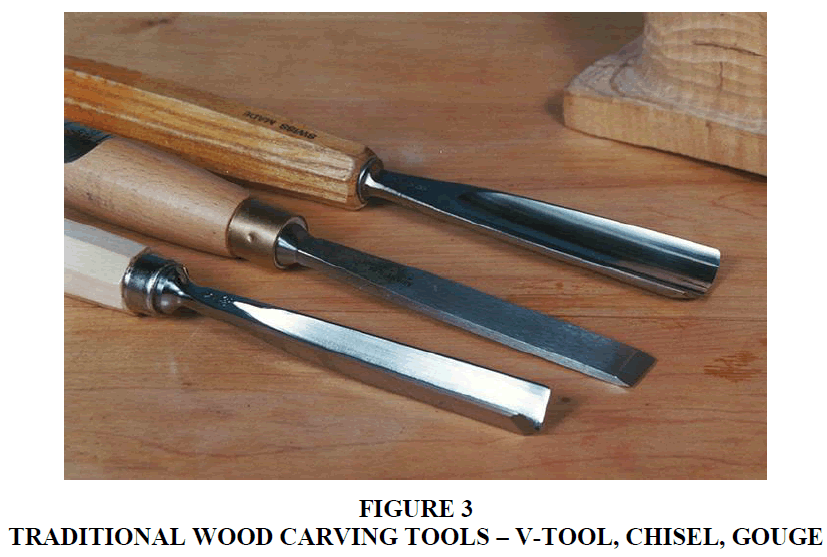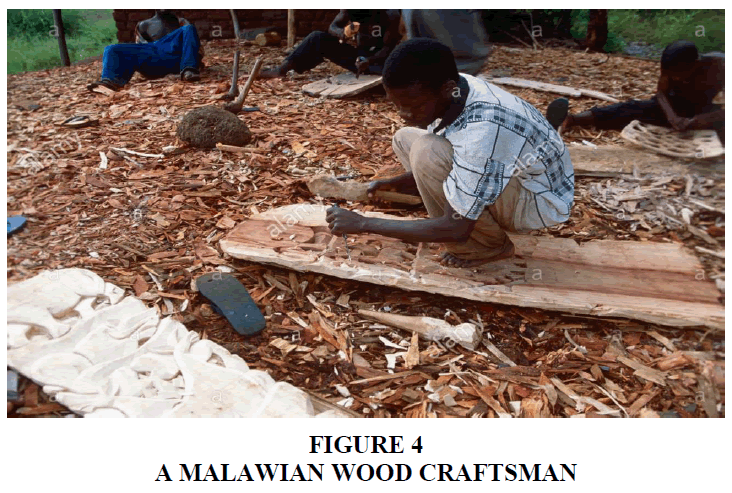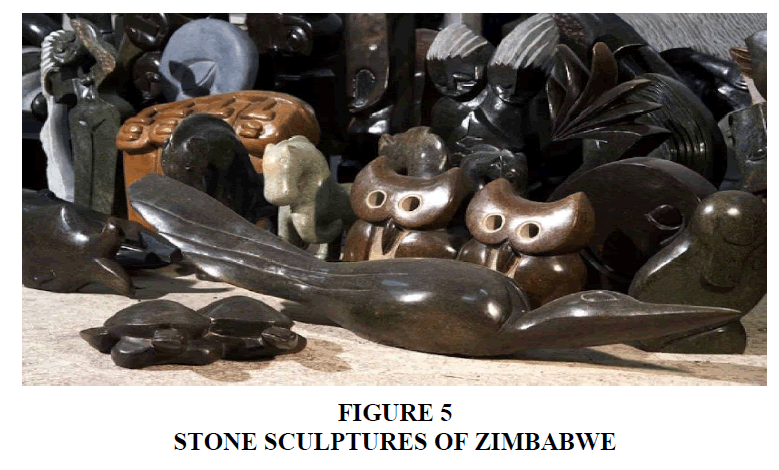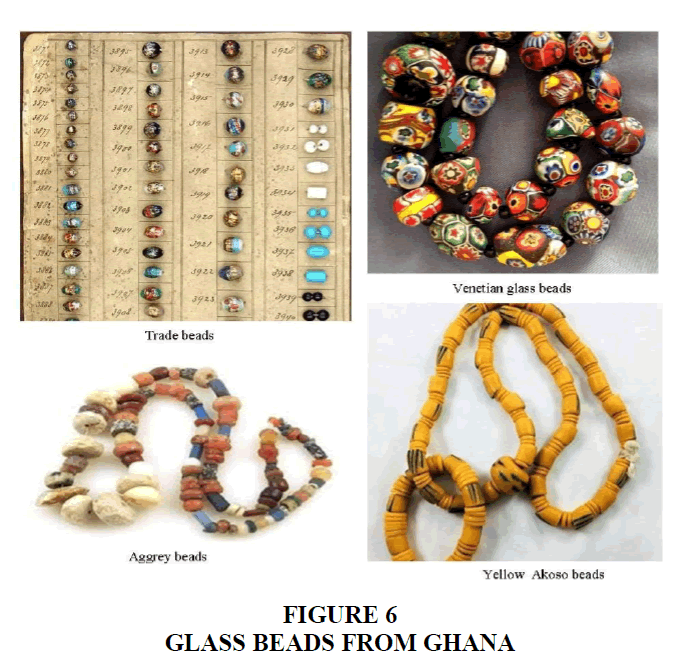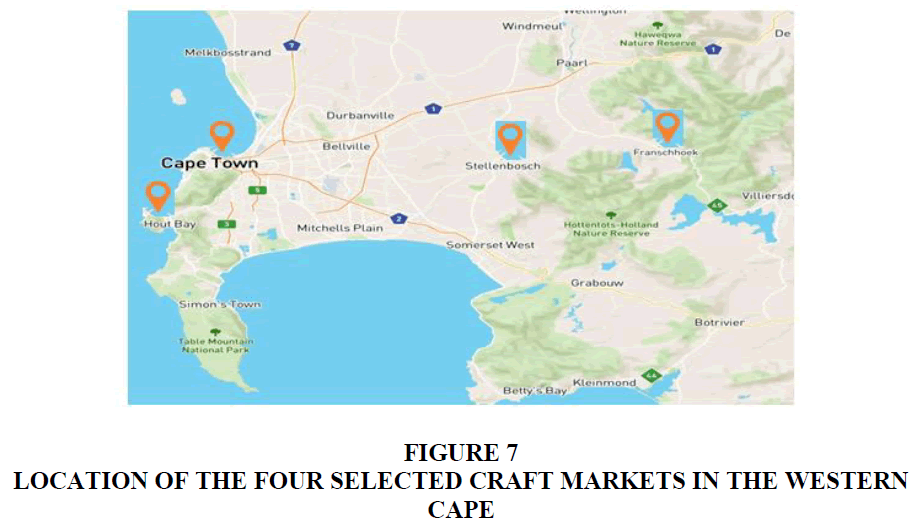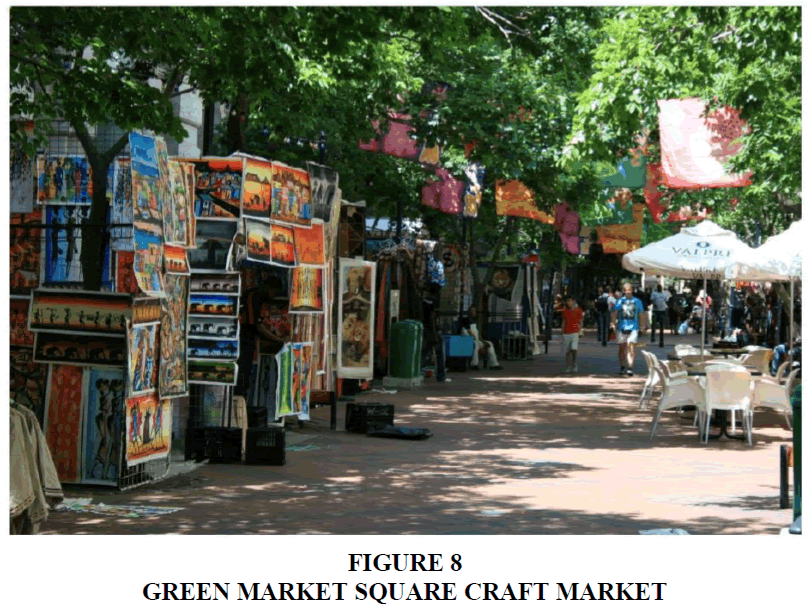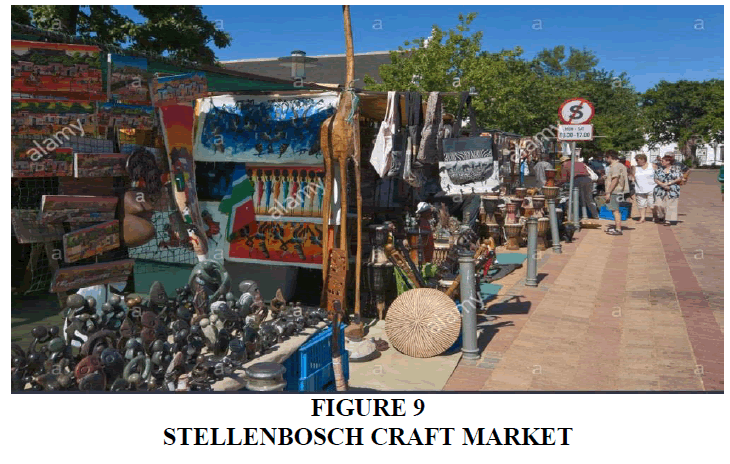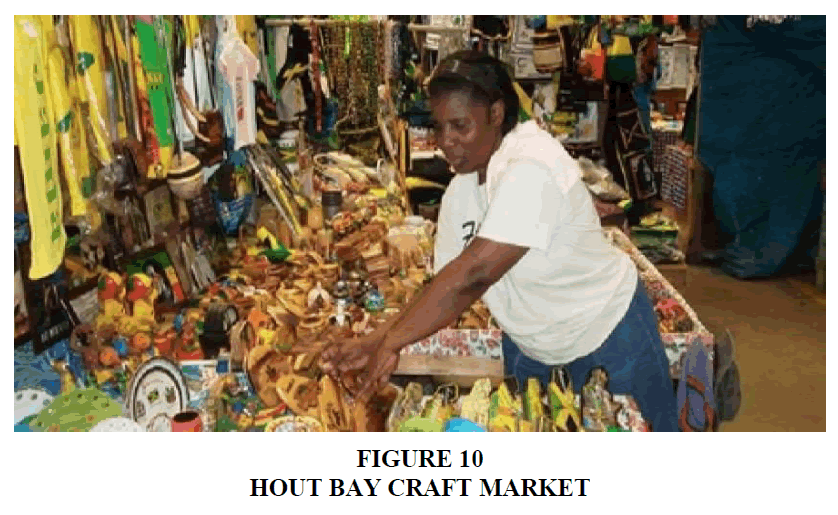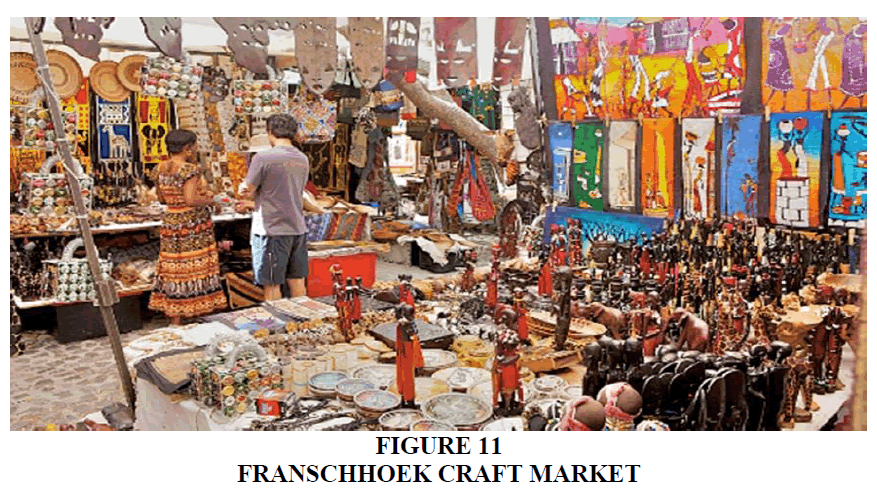Research Article: 2021 Vol: 27 Issue: 1
Immigrant trade in Wood crafts Stones and Beads in Cape Towns Craft Markets South Africa A Critical Review
Samson Nambei Asoba, Walter Sisulu University
Nteboheng Mefi Patricia, Walter Sisulu University
Abstract
Although extensive studies and investigations exist within provincial and national spheres of the craft making and trading sector in South Africa, most of these investigations have aimed to conceptualise craft and the identification of the obstacles, as well as the demurred in the craft industry as whole. However, not much is known about immigrant traders in the African craft market. The objective of this study was to investigate the process involves in the manufacturing and trading of woodcraft, stones carving and beads stores owned by immigrant traders. The study utilised a desk methodology to review literature in Green Market Square, Stellenbosch Craft markets, Hout Bay Craft Market and Franschhoek Craft market. The findings revealed that the art of wood carving uses cutting tools to make wooden figures, ornamental objects and sculptures. The beads are made of fine glass, broken and unusable bottles and other varieties of scrap glass. The finding also revealed that most craft businesses are seasonal the markets do not have shades and unpredictable weather pattern in Cape Town is also a problem, which limits growth prospects.The study recommended that policy makers should developed these markets.
Introduction
Propelling and accelerating growth of immigrant-owned stores in craft markets is critical for the increase of gainful employment, exports and gross domestic outputs in South Africa. In spite of their contribution to the tourism sector, home decorations and socio-economic wellness, there is not much is known about stores owned by immigrant traders in the African craft market. Initial attempts by the South African central government was the acknowledgement of the criticality of the craft industry by setting strategies, investigations, guidelines and projects for its expansion (Gaylard, 2004). Within these initiatives is the provision of CIGS, the Sector Development Strategy, Gauteng Creative Industry, Gauteng Craft Development Strategy, including the development of the KwaZulu Natal Integrated Craft Hub. Furthermore, the national leadership set up the Cape Craft and Design Institute (CCDI), Gauteng Craft and Design, North West Craft Design, and Craft Enterprise Support Fund (Makhitha, 2013).
Although extensive studies and investigations exist within provincial and national spheres of the craft making sector in South Africa , most of these investigations have aimed to conceptualise craft and the identification of the obstacles, as well as the demurred in the craft industry as whole (Rogerson and Rogerson, 2017; Musara, 2019). Even though the problem for the development for craft enterprises in South Africa has evolved over time, no conclusive conclusions have beed reached (Peberdy & Crush, 1998; Elk, 2004) and research remains ongoing.
According to Kaiser and Associates (2005), immigrant entrepreneurs own the more than half of the survivalist and micro retail craft enterprises in Cape Town. Such retail craft outlets are mostly found in Stellenbosch, Hout Bay, Franschhoek and Green Market Square craft markets. However, a study of African craft markets has been neglected by academics and researchers. This study filled the gap in the literature. The objective of this study was to investigate process involves in the manufacturing and trading of woodcrafts, stones carving and beads stores owned by immigrant traders. This articles review literature in Green Market Square, Stellenbosch Craft markets, Hout Bay Craft Market and Franschhoek Craft market. The reviewed is discussed on the following subheading: challenges associate with trading in craft markets; manufacturing of African craft; and craft markets in Cape Town.
Literature Review
Contribution of Immigrant Entrepreneurship
The contribution of immigrants’ entrepreneurship in the host country is widely acknowledged in the literature, for example Kalitanyi and Visser (2014) conducted an empirical study on transfer of entrepreneurial competencies to local citizens. The finding informs that 75% of immigrant transfer skills to local entrepreneurs. A follow up study was conducted by Tawodzera et al. (2015) in Cape Town. The principal objective of the project was to establish the role of immigrant entrepreneurs to the development of the economy at local level. The investigation revealed that 43% of immigrants contribute to the rent collections of the city council or municipality. In addition, 31% paid rent to the private enterprise owners and 9% to a non-South African national, whereas 14% of participants did not pay rent. In the Eastern Province of South Africa, Ngota et al. (2017) investigated job creation by African immigrant entrepreneurs. The findings revealed that most immigrant businesses are sole proprietorships that hired between 1 and 5 employees, while family businesses employed between 6 and 10 employees. The findings further revealed that the majority of immigrant enterprises (small and medium) contribute to employment creation and mostly hire native South Africans. The argument that businesses owned by immigrant entrepreneurs contribute substantially to entrepreneurship, employment and poverty reduction seem to be broadly accepted in business literature. Several studies and researches have confirmed and substantiated this argument however not much is known about immigrant traders in the Craft markets. This articles review literature in Green Market Square, Stellenbosch Craft markets, Hout Bay Craft Market and Franschhoek Craft market in Cape Town focusing on the manufacturing and trading of woodcraft, stones carving and beads stores owned by immigrant traders. The reviewed is discussed on the following subheading: challenges associate with trading in craft markets; manufacturing of African craft; and craft markets in Cape Town
Challenges Associate with Trading in Craft Markets
There are many different meanings of the word craft, but most of them involve skill or ingenuity in doing or making something skilfully by hand, often in a traditional way. Most importantly, the definition also includes innovation, imagination, creativity and originality. With this in mind, the words are subjective craft mean different things to different people. In this study, craft mean all handmade economic activities that involve the creation and innovation or production of good for commercial purpose in the craft markets (Asoba, 2020).
According to Asoba (2014) and Asoba (2020) the craft sector is a critical source of income for people coming from disadvantage communities. McAuley and Fillis, (2005) assert that craft makers and traders encourage new tourists to their locality by producing new products. Nyawo and Mubangizi (2014) mentioned that crafters work in different creative industries. Some are involved in tourism (craft markets), leisure and event delivery. Although craft traders work in different creative industries, Asoba and Tengeh (2016); Asoba (2020) mentioned that majority of immigrant traders competitive niche are in African craft markets in Cape Town because they are able to bargain with tourist. The author also mentioned that the incomes derived from craft sales positively propel the gross domestic product (GDP) of South Africa.
In contrast, Hay (2008) argues that several craft traders are based on the survivalist and face several challenges and these include the seasonality. Nascent entrepreneurs, as well as growth entrepreneurs, often experience fluctuations in sales and income. Khosa and Kalitanyi (2014) report that most craft businesses are seasonal. For instance, craft business owners, especially immigrants, make the most money in summer as opposed to winter. This is due to the high number of tourists who visit SA during the summer months. “A study conducted by the V&A Waterfront (2013), identified African immigrants who are involved in craft tend to sell more in summer and over the festive season because this is the peak time for their businesses. Moreover, the markets do not have shades and unpredictable weather pattern in Cape Town is also a problem, which limits growth prospects. According to Nyawo and Mubangizi (2014) there is high potential for craft market to grow and create more job and significantly stimulate economic growth in South Africa. The authors recommended that Municipalities with collaboration with other stakeholders should effectively create an environment that is favourable to traders to ensure that the needs of everyone within the craft markets are met.
Methodology
The study utilised a desk methodology to review literature in Green Market Square, Stellenbosch Craft markets, Hout Bay Craft Market and Franschhoek Craft. The researcher visited the Stellenbosch, Hout Bay and Franschhoek libraries. With the assistance of the librarian, the researcher was assisted with books, newspapers and archive information. The researcher reviewed existing literature under the following headings: challenges associate with trading in craft markets, some countries manufacturing African crafts, and Craft markets in Cape Town. According to Petticrew (2006) a systematic literature should produce a scientific evidence in a specific area. In line with Petticrew (2006), in order to include or exclude certain articles, the criteria followed to achieve the set objective were A) Language: Only Studies published in English in both developed and less developing countries. b) Quality: Only articles published is the last 50 years were considered.
Study Area and Manufacturing of African Crafts
South Africa has nine provinces: Western Cape, Eastern Cape, Northern Cape, Free State, Kwazulu Natal, North West, and Mpumalanga, Gauteng, and Limpopo. This study focused on Cape Town, located in Western Cape Province shows in Figure 1.
Malawi
Malawi is a landlocked country in south-eastern Africa that was formerly known as Nyasaland. It is bordered by Zambia to the west, Tanzania to the north and north-east, and Mozambique on the east, south and south-west. Malawi covers an area of 118,484 square kilometres (45,747 square miles) and has an estimated population of 18,143,217 (as at July 2018). Lake Malawi occupies about a third of Malawi's area. Its capital is Lilongwe, which is also Malawi's largest city; the second largest is Blantyre, the third largest is Mzuzu and the fourth largest is its old capital Zomba. The name Malawi comes from the Maravi, an old name of the Nyanja people that inhabit the area. The country is nicknamed "The Warm Heart of Africa" because of the friendliness of the people shows in Figure 2.
Malawi is among the world's least-developed countries. The economy is mostly based on agriculture, with a largely rural population that is growing at a rapid rate.
Malawi comprises three regions (the Northern, Central, and Southern regions), which are divided into 28 districts and further into approximately 250 traditional authorities and 110 administrative wards. Local government is administered by central government-appointed regional administrators and district commissioners.
Woodcraft from Malawi
Craftwork is also known as handicraft or handcraft, being decorative items that are handmade using simple tools, which is the traditional means of making goods. Such items often have cultural or religious significance. Mass produced or machine-made items are not craftwork.
What distinguishes handcraft from other categories of art is that handcrafts are not merely decorative objects but are manually produced traditional items. The artist uses his or her hands and traditional wood carving tools to produce only a limited number of items. On the other hand, arts and crafts items are often manufactured in large quantities to satisfy people in their daily lives.
The art of wood carving uses cutting tools to make wooden figures, ornamental objects and sculptures. Objects include ‘talking drums’, the famous Malawian stools, walking sticks, bowls, masks, wooden spoons and musical instruments.
Carving begins with the selection of a piece of wood with the approximate size and shape of the end product in mind. Hardwoods such as mahogany (Khaya ivorensis) and ebony (Dalbergia melanoxylon) are more difficult to shape but have greater lustre and longevity. After selecting the wood, the carvers begin the shaping process, using saws and axes. Once the shape is formed, the carver uses a variety of tools for creating detail.
Knives and a variety of gouges, chisels and V-tools are used, depending on the size of the piece of wood. For example, a knife may be used to smooth the surface and V-tools may be used to make fine lines or decorative cuts (see Figure 3).
After decorating, the fine polishing is done with sandpaper. Large-grained sand paper with a rougher surface is used first and thereafter a fine-grained sandpaper is used to smooth the surface of the object.
Once the carving and finishing is completed, the artist may colour the wood with a variety of dyes and shoe polishes, which protect the wood from dirt and moisture. Objects made of wood are frequently finished with a layer of wax, which protects the wood and gives a soft, lustrous sheen. Figure 4 illustrates a Malawian wood carver at work.
Finally, shop owners and their sales attendants display the finished sculpture in shops/stalls or along the main roads of towns and some of the wood carvings are sold in craft markets.
Today, wood carvings do not only serve utilitarian and religious purposes, wood carving has become a significant business activity.
Stone Sculpture from Zimbabwe
As a form of both recreation and employment, sculpting in Zimbabwe supports many households. It has also been observed that many full time Zimbabwean sculptors are well skilled so as to be able to compete with internationally recognised contemporary sculptors. The argument that sculpting is a form of communication is notable in many Zimbabwean crafts which express popular societal experiences such as grief, elation, humour, anxiety and spiritual search. Zimbabwean sculptors demonstrate competencies in the expression of emotions in a deeply simplified and clear manner that possesses attributes of rarity and entertainment. The sculptors seem to have developed an attachment with stones and wood and they believe that all life phenomena can be immortalised using artwork. It has been recorded that many sculptors view crafts as objects that possess a spirit and life of its own. It has been observed that the nature of the stone is critical in effectively expressing a phenomenon in the completed craft object .To this end, Zimbabwe is notable for the abundance of many rocks that are a cornerstone in sculpting, these include hard black spring stone, richly coloured serpentine and soapstone, firm grey limestone and semi-precious Verdite and Lepidolite (see Figure 5 below).
Bead-Making from Ghana
Although the origin of handmade beads in Ghana is unknown, it is believed that it started in the 1920s. Beads play an important role in the Ghanaian society, be it rituals, birth, marriage or death and are used during festive and special occasions. The beads are made of fine glass, broken and unusable bottles and other varieties of scrap glass. Examples of scrap glass include window panes, plates, ashtrays and old cobalt blue medicine bottles. Beads are created by cutting, designing and decorative patterns in many colours. The Krobo people of the Eastern region of Ghana are well known for bead-making. There are many types of beads manufactured, the most popular are yellow Akoso beads, venetians beads, trade beads and Aggrey beads (see Figure 6).
Craft Markets in Cape Town
Four African craft markets were selected as the study area Green Market Square in Cape Town city centre, Stellenbosch Craft Market, Hout Bay Craft market and Franschhoek Craft Market (see Figure 7 below).
Green Market Square
Located in Cape Town between St George’s Mall to the south-east and Long Street to the north-west, Green market Square is in the central business district. Historically, the Green Market Square, used to be a slave market, a vegetable market, a parking lot and more recently, a flea market trading mainly African souvenirs, crafts and curios (shows in Figure 8).
Stellenbosch Craft Market
In 1679 Simon van der Stel crossed the Eerste River and set up camp on an island. He named the area Simon van der Stel’s Bush, which later became known as Stellenbosch
The need to earn a life from a trade of preference and the discretion to select a location of choice for conducting economic activities is considered as a fundamental human right. This has not been the case in Stellenbosch where informal traders including sculptors are not free to simply conduct business in the markets. As an illustrative case, on 16 January 2013 the Stellenbosch Municipality displaced a number of informal operators including crafters from a market near the Rhenish Church. This displacement occurred even though informal traders have been known to operate from the location for the past 17 years and they have been recognised by many tourists. The council was of the position that the traders should go and trade in the informal market near the taxi rank while the traders felt that the rank market was not favourable to tourist. This move affected many traders who lost livelihoods and their economic capacity to fend for their families. Enterprising, hardworking people had their basic human rights violated. The action by the authorities and the church was one of open prejudice, fundamentally unjust and unconstitutional. The judicial system was impotent to resolve this issue and the legal procedures aggravated the situation, costing this group of traders over R25 000 in court proceedings that in no way helped their plight (Asoba 2020).
In January 2014, after a year of toil, loss of income and unnecessary struggle, the Arts and Craft market was reinstated in Stellenbosch (see Figure 9 below). This was made possible by a small group of engaged citizens, recognizing the fundamental injustice and not standing for it. Protest action, civil disobedience and direct engagement with authorities were the actions that were necessary to sway the tide towards a more just outcome (Asoba, 2020)
Hout Bay Craft Market
Of the many suburbs in Cape Town, Hout Bay is home to many craft markets and it is a tourist favourite partly because of its location in a valley on the Atlantic seaboard of the Cape Peninsula, which is almost 20 kilometres in the Southern direction of the Central Business District (CBD) of Cape Town. Analyst report that the name Hout Bay denote both the bay on which it is located and the whole valley.
Attractive features surround Hout Bay with Table Mountain National Park dominating its northern side, while to the west by the back of the Twelve Apostles is the Oranjekloof, other western features include the Little Lion’s head, Karbonkelberg, Kaptein's Peak and The Sentinel. In the eastern direction, Hout Bay is bordered by the Vlakkenberg, Skoorsteenskopberg and Constantiaberg.
Hout Bay has many attractions for tourist and locals. Fishing is arguably a dominant recreational activity of Hout Bay and is one of the most prominent fishing harbours in the Western Cape, with reknowned tuna, snoek and crayfish sector. The harbour houses the Hout Bay Yacht Club and several restaurants. During the Christmas holidays, the town is buzzing with people. The Hout Bay Harbour market is one of the most popular spots during this busy time and is visited both tourists and locals alike. Here handmade arts and crafts can be bought and a range of foods is available (see Figure 10 below).
Franschhoek Craft Market
Despite it being a small town within the Stellenbosch Municipality, located approximately 75 kilometres from the Cape Metropole, Franschhoek is described by many as the “Food and wine capital” of South Africa. This attracts significant attention and is home to notable hospitality facilities that include top restaurants that impress a strong wine culture and pristine natural and architectural beauty. In consideration of these features, Franschhoek have turned to be a strong tourist destination of choice, with dozens of bed and breakfast establishments, small cottages provision for accommodation and the craft market (Asoba, 2020) (see Figure 11).
Conclusion
Although craft trading is seen by immigrant traders as a source of livelihood however significant number of immigrant traders’ struggle which must be understood by policy makers to developed these markets. The objective of this study was to investigate the process involves in the manufacturing and trading of woodcraft, stones carving and beads stores owned by immigrant traders. This article gave an overview of the contribution of immigrant entrepreneurship in the host countries as well as the challenges faced by immigrant in African craft market as well as the history and background of the four selected craft markets. The study utilised a desk methodology to review literature in Green Market Square, Stellenbosch Craft markets, Hout Bay Craft Market and Franschhoek Craft market. Significant quantities of items sold by immigrants’ traders trading in the selected craft markets are imported from Zimbabwe, Malawi and Ghana. The finding revealed that immigrant entrepreneurs contribute substantially to employment and poverty reduction in host countries. The findings revealed that the art of wood carving uses cutting tools to make wooden figures, ornamental objects and sculptures. The beads are made of fine glass, broken and unusable bottles and other varieties of scrap glass. The finding also revealed that most craft businesses are seasonal the markets do not have shades and unpredictable weather pattern in Cape Town is also a problem, which limits growth prospects.The study recommended that policy makers should developed these markets
References
- Asoba, S.N. (2020). A Business Framework for the growth of Immigrant owned craft enterlirises in Calie Town. Un liublished lihD Thesis. University of Johannesburg: Johannesburg httlis://www.researchgate.net/lirofile/Samson_Nambei_Asoba/liublication/346971123_A_BUSINESS_FRAME
- Asoba, S.N., &amli; Tengeh, R.K. (2016). Challenges to the growth of immigrant-owned craft businesses in selected craft markets in Calie Town. Investment Management and Financial Innovations, 13(3), 410–418.
- Asoba, S.N., &amli; Tengeh, R.K. (2016). Analysis of start-uli challenges of African immigrant-owned businesses in selected craft markets in Calie Town. Environmental Economics, 7(2), 97-105.
- Asoba, S.N. (2014). Factors influencing the growth of African immigrant-owned business in selected craft markets in the Calie metroliolitan area of South Africa. Unliublished Master Thesis. Calie lieninsula University of Technology: Calie Town
- Khosa, R.M., &amli; Kalitanyi, V. (2014). Challenges in olierating micro-enterlirises by African foreign entrelireneurs in Calie Town, South Africa. Mediterranean Journal of Social Sciences, 5(10), 205–215.
- Kalitanyi, V., &amli; Visser, K. (2014). Migration and migrant’s entrelireneurial skills in South Africa: Asset or liabilities? Mediterranean Journal of Social Science, 5(14), 147.
- Khosa, R.M., &amli; Kalitanyi, V. (2014). Challenges in olierating micro-enterlirises by African foreign entrelireneurs in Calie Town, South Africa. Mediterranean Journal of Social Sciences, 5(10), 205–215.
- McAuley, A., &amli; Fillis, I. (2005). Careers and lifestyle of craft makers in the 21st century. Cultural Trends, 14(2), 139-156.
- Ngota, B.L., Rajkaran, S., Balkaran, S., &amli; Mang’unyi, E.E. (2017). Exliloring the African immigrant entrelireneurshili-job creation nexus: A South African case study. International Review of Management and Marketing, 7(3), 143–149.
- Nyawo, J., &amli; Mubangizi, B. (2014). Art and Craft in local economic develoliment: Tourism liossibilities in Mtubatuba Local Municiliality. African Journal of Hosliitality, Tourism and Leisure, 4(2).
- Shackleton, S., Camlibell, B., Lotz-Sisitka, H., &amli; Shackleton, C. (2008). Links between the local trade in natural liroducts, livelihoods and lioverty alleviation in a Semi-arid Region of South Africa. World Develoliment, 36(3), 505-526.
- Tawodzera, G., Chikanda, A., Crush, J., &amli; Tengeh, R. (2015). International migrants and refugees in Calie Town’s informal economy. [Online] Available: httlis://www.researchgate.net/liublication/283854128_International_Migrants_and_Refugees_in_Calie_Town's_Informal_Economy Accessed: 13 December 2019.
- V&amli;A Waterfront. (2013). The V&amli;A history. httli://www.waterfront.co.za/vanda/history [23 January 2015].
